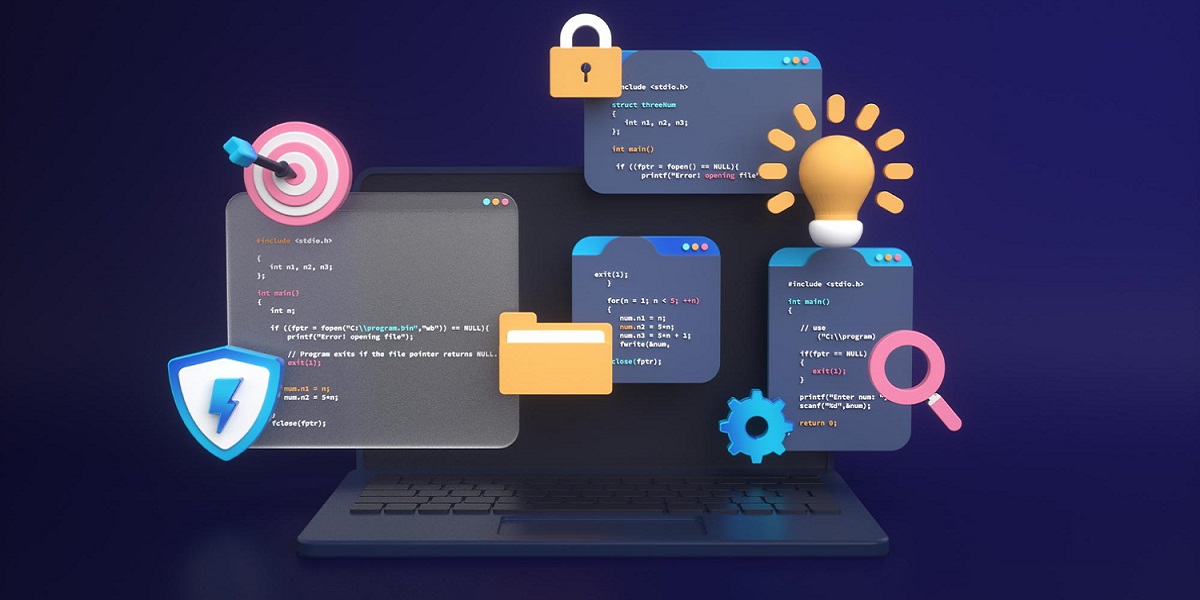The Role of Secure Software Development in Mitigating Cybersecurity Threats for UK Businesses

From smartphones to smart homes, we are in an age where everything depends on software running our lives, but is this the real-time to trust technology to take over our interconnected world? As cybersecurity threats loom larger and wiser, the need for secure software development solutions has skyrocketed.
Imagine a day when software applications stand vulnerable to malicious attacks, data breaches, and unauthorized access. The destructive effects would be irreparable for individuals, houses, businesses, and our entire society over time.
For example, do you remember the Equifax data breach of 2017? One of the greatest financial agencies became paralyzed by one of the biggest cyberattacks, which uncovered sensitive information for almost 148 million people. The financial implications and reputational destruction as a result of the breach were enormous. And this is precisely why we require a paradigm shift in the way we deal with security in software development.
In other words, it is no longer an afterthought for following secure SDLC (software development life cycle) processes; now, it is the foundation where all the service providers should be putting up the software. Besides, it will involve creating a proactive mindset incorporating all security principles and practices into the complete software development lifecycle.
Yet, how do we chart our way through this complex software development landscape and find security in software development? There are quite a few frameworks and best practices to guide us on our way. This post will take a much deeper dive into the secure development lifecycle, best practices, and frameworks to think about integrating in 2025. This will also serve as a guide for UK businesses to build safe and secure software products that can repel cyberattacks effectively.
What Exactly Is Secure Software Development?
Secure software development is more than an activity of creating applications. It involves designing and implementing software with security in mind right from the very beginning, embedding a strong shield within the code to protect against looming cyber threats.
It also includes secure coding practice integrated throughout the software development lifecycle, from a conceptual design and coding to the actual software testing, deployment, and ongoing maintenance.
A broader view of understanding vulnerabilities and the capacity to design strong-grooved systems to resist even the most advanced cyber attacks is paramount. Such secure SDLC goes beyond the technicalities. It is a state of philosophy embracing the notion that security is not an afterthought but something that needs to be ingrained in every step of the development process.
It forces software developers to refocus and think like hackers- to anticipate vulnerabilities to build their defenses proactively and stay ahead of the current threat landscape. This is also one of the core reasons why the software development services in the UK are paying more attention to secure software development to mitigate all cyber threats effectively.
If you are still unsure of why secure development is necessary, let us explain its importance in today's digital world.
Importance of Secure SDLC
As per the latest IBM report, a single data breach can contribute a cost of $4.35 million to organizations around the world and, in the US alone, has a cost of up to $9.44 million.
Thus, the numbers speak for themselves as to why your developers have to adhere to a secure development lifecycle to save your company's reputation from malicious intent.
Now let us unveil the many crucial advantages of developing software securely:
1. Strengthening Defense Against Cyber Attacks
When developers build security measures into the very beginnings of the software development process, it permits them to find and fix weaknesses that hackers would love to exploit at a later stage.
It becomes radically difficult for forged hands to breach sensitive information or disrupt critical services.
2. Building Trust with Users
A Secure Software Development Life Cycle, which focuses on data protection and privacy, is a driver of this trust. When your users feel that their personal information is in safe hands, they are more likely to engage with your digital platform, share their data, and participate in online transactions.
3. Meeting Regulatory Compliance
Across verticals, regulatory bodies are laying down the law on all matters concerning user data and privacy. The secure software development life cycle policy follows both the letter of the regulation and the latest trends in the software development lifecycle, keeping your organization in compliance and out of trouble.
4. Avoiding Expensive Security Breaches
The impact of a security breach reaches far-reaching financial and reputational consequences. Secure development practices would guarantee certain security, thereby avoiding the impending costs resulting from attacks on data.
By enforcing top-notch security measures from the outset, the company saves itself the strafe of legal tussles, penalties, customer loss, and the arduous task of rebuilding its brand reputation.
Various Types of Secure SDLC Methodologies
Several secure software development frameworks and methodologies have been aiding organizations across industries in building foolproof and reliable software systems.
To facilitate your informed decision, we have briefly detailed the five best practices for securing software development discussed below:
1. NIST Secure Software Development Framework
The NIST frame is a comprehensive resource for developers committed to the total integration of security in their software development lifecycle.
This framework is rich with best practices, guidelines, and recommendations for all development processes, from planning and requirements to design, implementation, testing, and maintenance.
Perhaps one of the most important aspects of NIST's framework is that it focuses mostly on risk management. It emphasizes identifying and mitigating potential vulnerabilities at all levels of the application development process, bringing an efficient way to security through these measures.
Using the guidelines from NIST, custom software developers can systematically implement security measures, assess risks, and manage informed programs for building robust and resilient software systems.
2. Microsoft Security Development Lifecycle
SDL has proved to be a strong friend to a software engineer in the safe SDLC framework, which is Microsoft Security Development Lifecycle (SDL). SDL is one of the proven methodologies, whereby security practices are integrated into each step of the development process in line with the commitment of Microsoft to trustworthy software.
What makes SDL differenet is its education and training emphasis. Microsoft realizes that developers and testers require the know-how and skill set to address security obstacles adequately.
By availing resources, tools, and training materials, SDL enables software testers to detect vulnerability potential, apply secure coding practices, and conduct rigorous security tests on a software product.
This, in addition, minimizes the risk of security breaches and serves as a blueprint for the developers to create software that meets high-security standards and inspires trust in the end users.
3. The Secure Software Framework for BSA
The BSA Framework for Secure Software is a construct created by the Business Software Alliance as a way of unifying the entire software industry in advocating for secure software development standards for organizations.
It harmonizes the experience and wisdom of industry leaders, promotes a shared workplace culture for best practices, and turns out to be very inclusive.
The BSA secure software development framework emphasizes the need for the inclusion of security thought processes in the entire software development life cycle, from planning and design to implementation, testing, and maintenance.
With practical guidance on employing security controls, conducting risk assessments, and corresponding with related protocols, it becomes a repository of applicable advice. Hence, by adopting the BSA Framework, developers will have met the coding standards of code quality while leaving security a top priority.
4. OWASP Software Assurance Maturity Model (SAMM)
OWASP has been the hallmark of expertise for several years as far as application security is concerned. Their SAMM is an exhaustive framework that would guide organizations toward building and maintaining secure software.
In other words, SAMM provides a blueprint for maturing an organization's secure software lifecycle with governance, intelligence, and verification as its focal points. The goal is to help companies assess and improve their software security activities in several dimensions.
It also provides advice on setting up well-defined governance structures, building secure coding practices, implementing threat modeling, performing security testing, and nurturing a DevSecOps culture.
In a nutshell, if you want your software security maturity to shoot up and strengthen its foundations for resilient code, then you can consider this framework for your next project.
5. The Maturity Model for Building Security
The Building Security in Maturity Model (BSIMM), developed by the Software Security Group, is intended as a roadmap to guide organizations in defining and improving their secure code development processes. Organizations will be able to build a culture of security based on what has been seen and done by effective software security initiatives across industries.
This comprises many different activities from security governance to intelligence gathering, development practices, and deployment strategies; they will allow organization comparisons as software development and security measures with an industry peer group to find improvement opportunities.
In other words, BSIMM enables organizations to manage their software security posture and build a strong foundation for a secure SDLC.
Some Possible Challenges within the Secure Development Lifecycle
The secure SDLC promised some real-time results, but there are challenges. These are some possible roadblocks that software developers and software engineers could face on their way:
1. Lack of Security Awareness and Training: Developers can write very clean and efficient code, but security awareness is not part of their toolkit. Often, this lack of knowledge is responsible for causing some security flaws in software.
2. Making Security Easy to Go through for Users: In some cases, securing would involve placing rigorous controls, which might complicate the authentication process or have many prompts that can frustrate users and, as a result, even drive them away from using the software they implemented these controls on.
3. Use of Third-Party Libraries and Components: Developers use third-party libraries and components to speed up the software development process but can easily jeopardize the whole security of their applications if these libraries or components contain vulnerabilities or malicious code.
4. Timely Patching and Vulnerability Management: Software development is evolutionary, and so is when a vulnerability occurs in software; thus, it should always be addressed and patched timely by developers to reduce every risk of exploitation.
Best Practices of Secure Software Development
We have learned the frameworks; let's move on to secure SDLC best practices:
Best Practices for Secure Software Development
1. Think Security from the Beginning
Secure software development, as previously explained, focuses on the DevOps as a service mindset, in which security is one of the foremost considerations in every decision. By thinking about security from the beginning, developers can spot potential vulnerabilities and design applications that have a solid foundation of protection.
Integrating security in the requirements-gathering and design phases ensures security is much more than an afterthought- it becomes an integral part of the software's DNA.
Proactive efforts such as threat modeling and risk assessment must come into play to identify and mitigate security issues early on. Add to that the best practices in security testing for software development, and organizations will be able to preemptively manage risks and build applications capable of withstanding an ever-changing threat landscape.
2. Build a Secure Software Development Policy
Secure Software Development Consulting Solutions takes over the whole development life cycle in your organization, setting standards and expectations.
This policy highlights rules and procedures basically for the developer in carrying out his/her work. Thus, the formation of a secure development strategy guarantees uniformity in secure development within the trends of the best software testing and assurance.
When establishing a secure software development policy, you should consider guidelines for secure programming, vulnerability management, secure code review, and secure deployment with operational support. It should also include provisions for dealing with security incidents and instructions on the importance of cultivating a culture of security and enhancing ongoing security training and awareness.
The point is that by creating secure software development teams, you would foment a culture of security and set a foundation for a robust software development process.
3. Use a Secure Software Development Framework
A secure software development framework is an organized way of developing secure applications. Using a known and tested framework, like the Open Web Application Security Project (OWASP) Secure Software Development Lifecycle (SSDLC), post facto organizations can extend the field of best practices and industry expertise.
These frameworks help organizations in different phases of the software product development life cycle as security is infused at every step of the life cycle. In simple words, a framework generally consists of security requirements collection, secure design and coding practices, complete testing and validation as well as continuous security monitoring and maintenance.
That precisely is why you need to utilize one of those discussed secure software development frameworks to develop an organized and repeatable procedure for designing a secure software application.
4. Utilize a Secure Software Development Framework
Secure software development frameworks provide structured methodologies for developing secure applications. By using a known framework such as the Open Web Application Security Project (OWASP) Secure Software Development Lifecycle (SSDLC), organizations may leverage established best practices and industry expertise.
These different frameworks guide organizations through various stages in the software product development life cycle, thereby ensuring that security is considered at every step. Security checkpoints generally include gathering security requirements, maintaining secure design and coding practices, comprehensive testing and validation, and ongoing security monitoring and maintenance.
This is why it is so important to make use of one of the secure software development frameworks mentioned earlier: a well-designed framework can ensure that you develop a systematic and repeatable process for creating secure software applications.
5. Apply Software Design Best Practices to Address Security Needs
Secure software starts with design. Software design best practices will allow developers to construct security from the ground up. Among these practices, security requirements should be documented, as well as threat modeling and the selection of robust software architecture patterns intended for attack resistance.
Keep in mind that security requirements must be incorporated into the software at all levels of design, including, but not limited to, access controls with secure authentication, confidentiality of data through encryption, and secured channels for transferring the information.
Thus, by incorporating security considerations during the software design stage, the path to a secure SDLC would be opened, one that will be resistant to future attacks.
6. Follow Secure Coding Practices
Secure coding is the keystone of secure software: it shields applications from vulnerabilities and possible exploits when constructed very carefully. Hence, it is imperative to practice secure coding so that developers can minimize the chances of introducing a security weakness in the codebase.
Secure coding involves following secure coding guidelines, avoiding common vulnerabilities like SQL injection and cross-site scripting, validating inputs, handling errors appropriately, and so on.
You can also use yet another way of boosting your application's defenses to enclose frameworks and libraries supporting security features.
7. Be Ready to Fix Security Issues
There are chances that some vulnerabilities may come out despite your best efforts in developing the software. So, it becomes necessary that you are able to remediate all of such vulnerabilities as early as possible and keep the software application secure.
For that, it is important to know just how rigorous software testing is important and then set up all of the things necessary for effective management in dealing with vulnerabilities.
In the ideal scenario, each organization will write an incident response plan to address the identification, prioritization, and remediation of vulnerabilities. Regular penetration tests should consist of unit tests, functional tests, and so on, thereby exposing hidden vulnerabilities.
You can easily barricade chances of potential exploit and maintain the current security level of your software by rectifying all the exposed vulnerabilities in no time.
8. Stay Agile to Changing Dynamics
The threat landscape is always changing, and organizations must be able to adapt and respond to new risks. Agile methodologies will, therefore, permit the constant integration and deployment of security measures along with the custom software development process while also addressing potential security concerns.
Essentially, when security practices are incorporated into each stage of the SDLC, those security issues can be dealt with proactively and in due time. Further, such an approach allows rapid implementation of newer security measures like threat intelligence feeds, advanced authentication methods, and secure deployment practices.
Most critically, with an agile mindset in software development, one can stay ahead of encroaching threats and ensure that the software is resilient against ever-changing challenges.
This means that by keeping an agile approach, you can develop software that withstands the test of time and newfound security threats.
In Conclusion
As customers demand more rigorous and challenging software development methodologies, software development methodologies are changing rapidly. Therefore, security is an important issue for any company developing software in a wide range of fields, including industrial IoT platforms, web/mobile applications, etc. These products are known for requiring extra protection when it comes to the security of critical data and systems. The security must be considered as an ongoing process that needs continuous monitoring every single second. Furthermore, it must start from the very first stage of the software development lifecycle-from requirements through planning, deployment, testing, and maintenance. Remember, integrating security into every stage of software development is not just an ethical practice but also a strategic investment in building more resilient and trusted software solutions for a safer digital future. So, if you're set on building secure, reliable software, be sure to use these frameworks and best practices for a successful result.
Hyperlink InfoSystem - Most Trusted End-to-End development Solution Provider.
Write For Us





